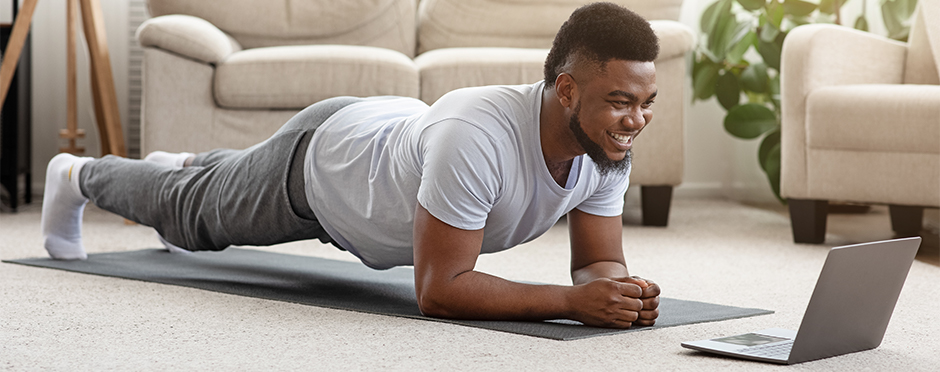
Common Workout Myths: Debunked
Leave a CommentThere is a lot of exercise advice available these days. It can be found in magazines, TV shows, online resources, and even come as advice from friends. It may be hard to know what is true and what is not. Read below as we debunk some common workout myths!
Myth #1: Perform static stretches before you work out to prevent injury
Many of us learned to perform static stretching prior to workouts. Static stretches are generally held for 30-60 seconds and while it is true they can help with flexibility, they may not be the most beneficial prior to a workout. Research has shown that static stretching may impair performance if performed prior to activity.1
A better option is to perform dynamic stretching prior to a workout. Dynamic stretching involves moving through a full joint range, for example arm or leg swings. A dynamic stretching warm up should include movements that will be a part of the workout. For example, prior to a run, leg swings, trunk rotations, high knees or butt kicks may all be good options.
Myth #2: Sit ups or crunches are the best core workouts
While sit ups or crunches are not going to be detrimental for core strength, they may not be the best or most efficient exercise for strengthening the entire core. The muscles commonly referred to as “the core” include the four layers of abdominal muscles including the rectus abdominis, internal obliques, external obliques, and the transverse abdominis. These muscles all run in different directions therefore a common sit up is only working one of these crucial core muscles. Planks are a great option that involve the whole core as well as standing core twists holding a dumbbell or medicine ball.
Myth #3: You should work out every day
When you work out, muscle fibers breakdown so they can rebuild stronger. Therefore you should give your body time to recover. Aim for 1-2 active recovery rest days each week. Active recovery means you can do light exercise or stretching that is not placing large amounts of stress on the body. Examples of active recovery include a light yoga class or a walk. Active recovery days are not just for physical health but can also be beneficial for your mental health.
Myth #4: Working out in the morning is best
While working out first thing in the morning may be best for some people, there is no single optimal time for a workout for everyone. Working out in the morning may be convenient for some due to scheduling or simply because they’re a morning person. But there is no research that says a workout at 6am is “better” or more effective than a workout at 4pm. Find what works best for you!
Myth #5: Puzzles are the only exercise for your brain
While mental stimulation may be beneficial, physical exercise is also good for the brain. Aerobic exercise or exercise that raises the heart rate for a sustained period of time is beneficial for the brain. Exercise can boost your mood, improve your memory, and decrease stress and there have been some studies suggesting exercise can help with age related changes in the brain.2
We hope we’ve debunked a few common workout myths you may have been curious about! If you notice any unusual aches or pains that linger long after your workout, request a Free Assessment with one of our movement experts. Assessments are available both in-clinic and virtually through our telehealth platform.
The Athletico blog is an educational resource written by Athletico employees. Athletico bloggers are licensed professionals who abide by the code of ethics outlined by their respective professional associations. The content published in blog posts represents the opinion of the individual author based on their expertise and experience. The content provided in this blog is for informational purposes only, does not constitute medical advice and should not be relied on for making personal health decisions.
References:
1. Page P. CURRENT CONCEPTS IN MUSCLE STRETCHING FOR EXERCISE AND REHABILITATION. International Journal of Sports Physical Therapy. 2012;7(1):109-119
2. Vecchio LM, Meng Y, Xhima K, Lipsman N, Hamani C, Aubert I. The Neuroprotective Effects of Exercise: Maintaining a Healthy Brain Throughout Aging. Brain Plast. 2018;4(1):17-52. Published 2018 Dec 12. doi:10.3233/BPL-180069
